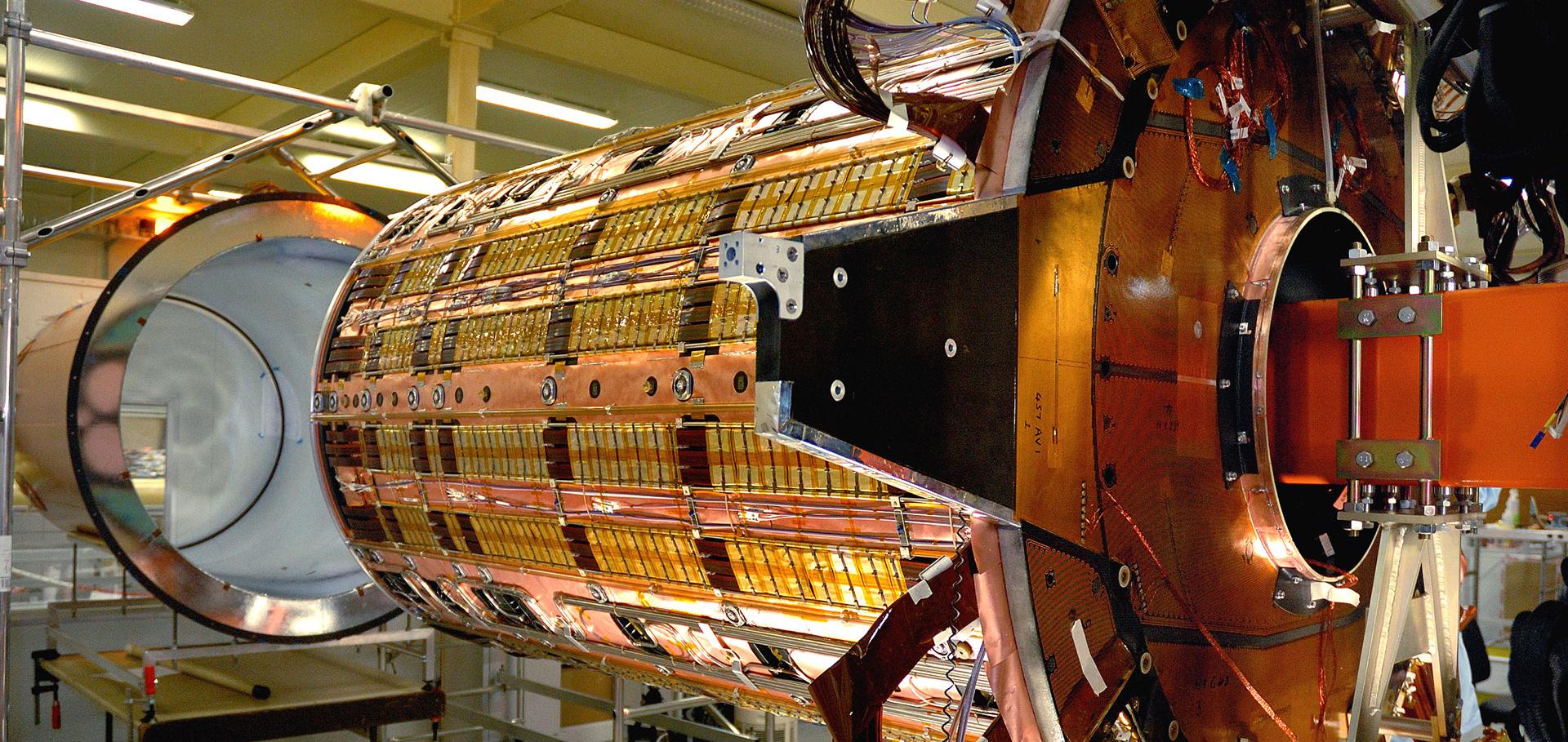Dark Matter Search Results from 4.2 Tonne-Years of Exposure of the LUX-ZEPLIN (LZ) Experiment
Physical Review Letters American Physical Society (APS) 135:1 (2025) 011802
Abstract:
We report results of a search for nuclear recoils induced by weakly interacting massive particle (WIMP) dark matter using the LUX-ZEPLIN (LZ) two-phase xenon time projection chamber. This analysis uses a total exposure of tonne-years from 280 live days of LZ operation, of which tonne-years and 220 live days are new. A technique to actively tag background electronic recoils from decays is featured for the first time. Enhanced electron-ion recombination is observed in two-neutrino double electron capture decays of , representing a noteworthy new background. After removal of artificial signal-like events injected into the dataset to mitigate analyzer bias, we find no evidence for an excess over expected backgrounds. World-leading constraints are placed on spin-independent (SI) and spin-dependent WIMP-nucleon cross sections for masses . The strongest SI exclusion set is at the 90% confidence level and the best SI median sensitivity achieved is , both for a mass of . Published by the American Physical Society 2025Electronic structure, reflectivity and X-ray luminescence of MAPbCl 3 crystal in orthorhombic phase
Scientific Reports Nature Research 15:1 (2025) 12912
Abstract:
This study provides a comprehensive analysis of the electronic structure, reflectivity, and luminescent spectra of the organic-inorganic, metal-halide MAPbCl3 perovskite, which has considerable potential for various optoelectronic applications. Using density functional theory (DFT) calculations, we investigated the electronic structure of MAPbCl3 and interpreted the key features of its reflectivity spectra across a wide energy range from 3 to 10 eV. The reflectivity spectra reveal prominent excitonic features at 3.22 eV near the absorption edge and additional optical transitions at higher energies, highlighting the material’s intricate electronic structure. Furthermore, we examined the temperature dependence of radiative decay dynamics under high-energy radiation through X-ray luminescence spectra and decay time measurements. We observe emission from free and bound excitons with an exceptionally short decay time (≤ 1 ns) and significant thermal quenching at low temperatures (100 K) in the 385–430 nm range. These findings underline the importance of continued exploration of optoelectronic properties of the material to enhance its performance in practical applications.Transforming a rare event search into a not-so-rare event search in real-time with deep learning-based object detection
Physical Review D American Physical Society (APS) 111:7 (2025) 072004
Two-neutrino double electron capture of 124Xe in the first LUX-ZEPLIN exposure
Journal of Physics G Nuclear and Particle Physics IOP Publishing 52:1 (2025) 015103
Constraints on Covariant Dark-Matter–Nucleon Effective Field Theory Interactions from the First Science Run of the LUX-ZEPLIN Experiment
Physical Review Letters American Physical Society (APS) 133:22 (2024) 221801


